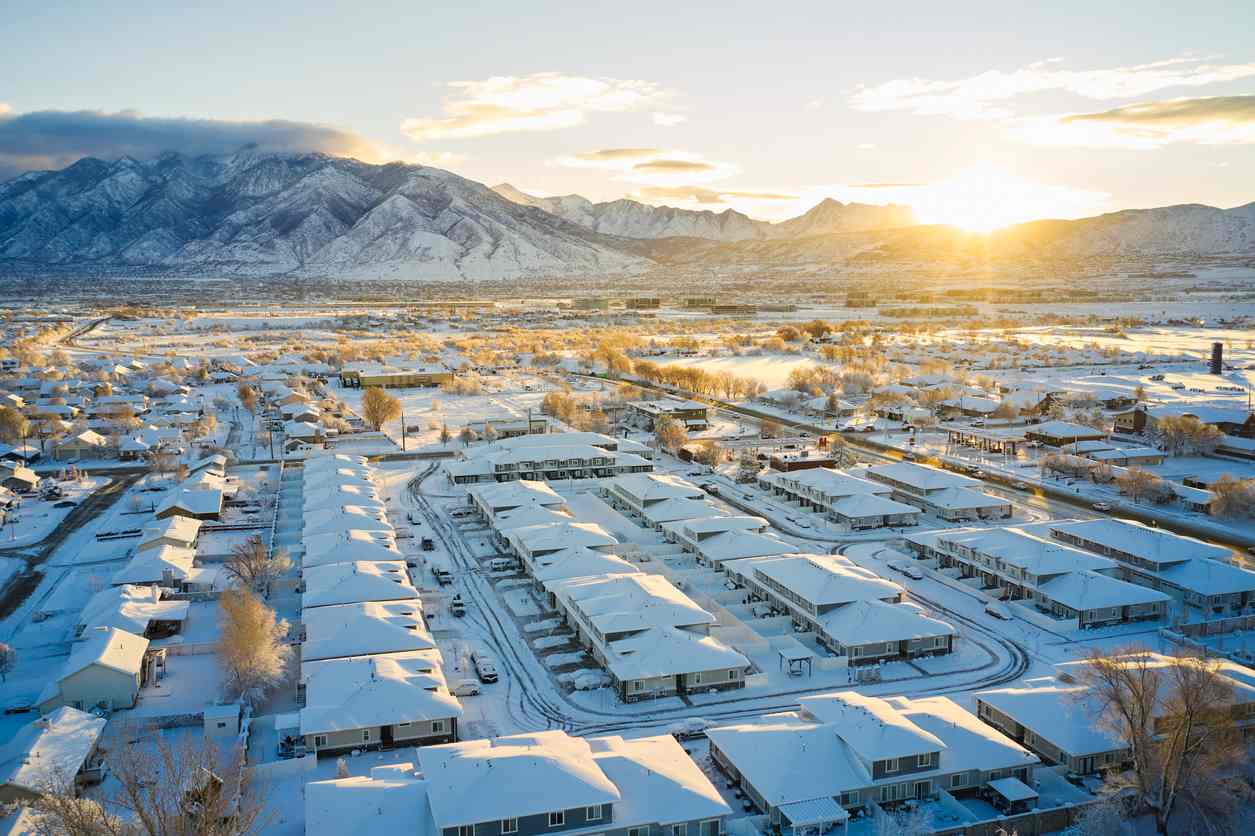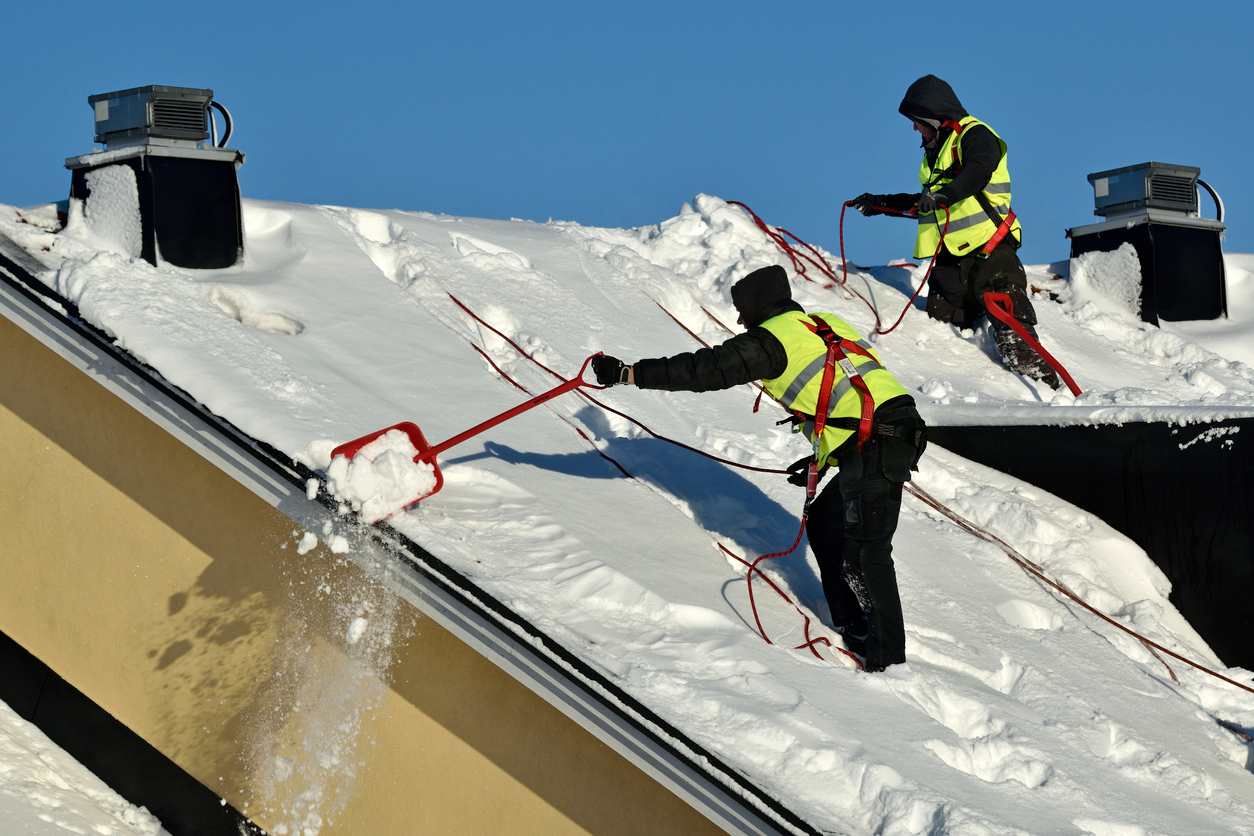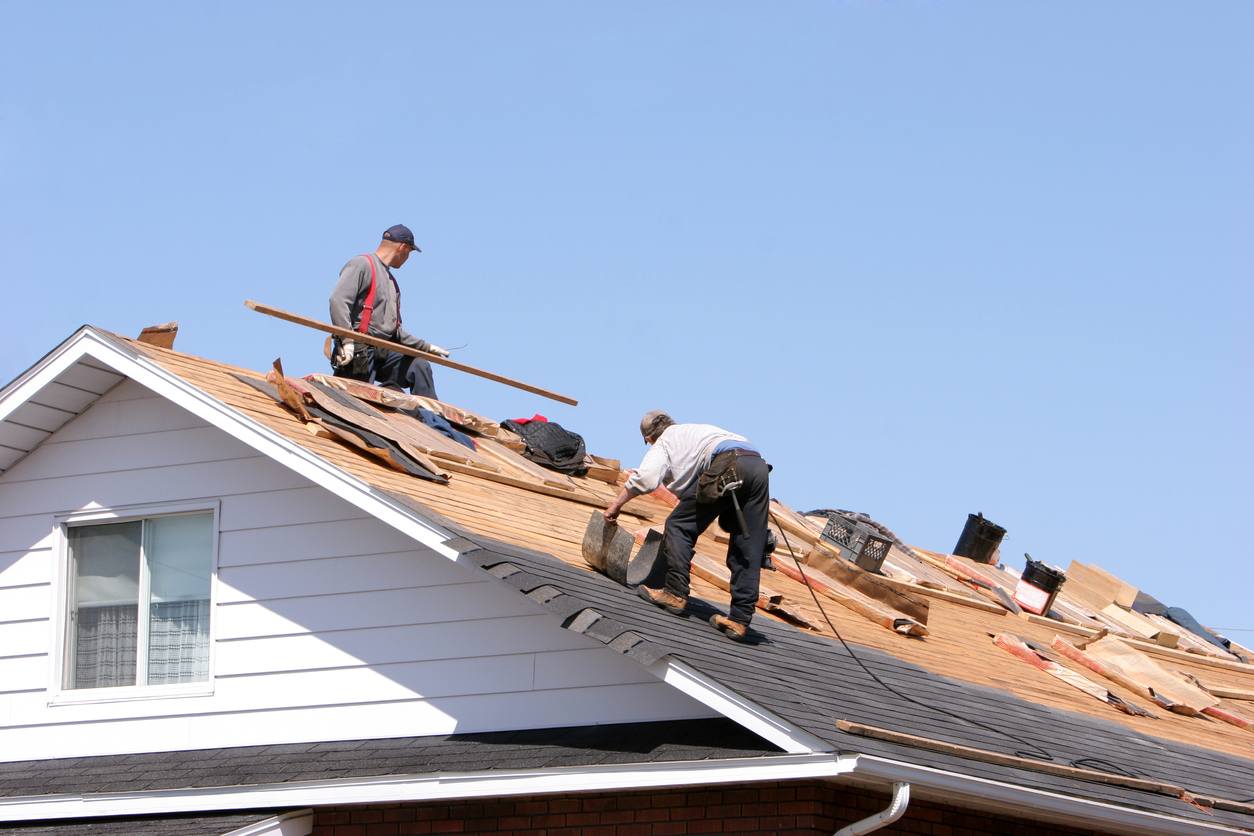
As a homeowner, you know that proper, regular maintenance is crucial to ensuring your home is as sturdy and beautiful as the day you bought it. This routine upkeep literally keeps a roof over your head.
But climate conditions are fairly diverse across the Beehive State, which means your home’s roof can last anywhere from one to three decades. Exactly how long a roof lasts in Utah varies between buildings and areas, but we outline what to expect in our detailed guide below.
How Long Does a Roof Last in Utah?
Due to a variety of factors—from material to climate—there’s no one-size-fits-all estimate for how long any given Utah roof will last. However, it’s helpful to keep these factors in mind to know what to expect when it comes to roof maintenance, repair, and replacement.
Roof Materials and Lifespans
The most common roofing materials used in residential construction include asphalt or fiberglass shingles, metal, and wood shingles or shakes. Review the estimated lifespan of each to determine how long your roof might last.
Asphalt or Fiberglass Shingles
Asphalt or fiberglass shingles are the most common roofing materials available today, and they’re a cost-effective and sturdy option for many homes. Asphalt protects against intense UV rays and common weather patterns, such as wind, rain, and snow. When combined with fiberglass, these lightweight shingles deliver uncompromised durability.
Asphalt and fiberglass shingles are especially popular among Utah homeowners because of the dry climate found throughout the state. These materials are more susceptible to algae or mold growth in humid areas. Both types of shingles can last anywhere from 15 to 30 years, and some brands offer warranties that guarantee at least a 25-year lifespan.
Metal Roofs
Aluminum, copper, and steel roofing materials vary in thickness, color, price, and durability. This material is popular in snowier regions, as the smooth metal helps the snow slide off the surface of the roof. Metal roofing is available in tiles, panels, and smooth sheets to complement any preferred exterior aesthetic.
Metal is a highly durable material. Well-coated, thicker gauged metal roofs can last between 20 years to half a century. One downside to metal roofing is its susceptibility to damage—dents and dings from hail or falling debris are nearly impossible to repair.
Wood Shingles or Shakes
Over time, wood shingles weather, resulting in an eye-catching patina that looks highly appealing against Utah’s mountainous backdrop. Wood shingles and shakes, especially those made from cedar, are resistant to rot and insect damage and fade to an attractive silvery color shortly after installation.
Wood shakes should last anywhere from 15 to 30 years, depending on how they’re treated, installed, and maintained. Any warped or split shingles can cause problems in surrounding areas, leading to more extensive and expensive repairs if left unchecked.
Material Quality
As with many other purchases, you get what you pay for when choosing roofing materials. The durability of any material can suffer if it’s poor quality.
If saving money is a priority, setting your sights ahead when making material choices is essential. High-quality materials last longer and require fewer repairs when compared to lesser-quality materials, so spending a bit more upfront can extend the overall lifespan of your roof and cost you less in the long run.
Depending on who you hire to install or replace your roof, you may not have a choice in the material’s quality. It’s essential to look for reputable roofers who use durable, high-caliber supplies that give your roof the best chance at longevity.
Utah Climate Factors

Weather fluctuations considerably influence roof longevity, including:
- Average snowfall and moisture patterns in your area
- Annual freeze and thaw cycles
- The potential for high heat and harsh UV rays on the surface
- Seasonal and environmental stresses, such as large storms or heat waves
When water freezes and expands on top of your home, this can cause the roofing materials to expand as well. Intense radiation from the sun, particularly in the summer months, can cause these materials to deteriorate faster than in more moderate climates.
To better understand how climate conditions impact your home, consider the weather in your area. Do you live in a northern region with heavy snow or a southern area with hot, dry heat? Each impacts your roof differently.
Installation and Maintenance
Another aspect of how long a roof lasts on a Utah home comes down to the experience and skill of your roofing contractors. Experienced roofers take steps to ensure proper installation from the start, so you have less to worry about over time.
The quality of your installation ensures the correct placement of all your roof components to provide adequate protection from the elements. Inexperienced or hurried contractors can leave exposed points susceptible to everyday wear and tear.
How quickly you notice minor issues and hire a professional to resolve them can also extend your roof’s life expectancy. Taking care of any signs of damage can prevent minor issues from becoming increasingly significant ones.
Architectural Design
There’s much more to your home’s architecture than interior square footage and exterior aesthetics. As a rule, a steeper roof pitch, or the angle at which it slopes, reduces the likelihood of debris and moisture remaining on its surface and weakening the shingles. Low-slope or flat roofs typically have poor drainage, making them more vulnerable to damage-causing moisture buildup.
Also, storm winds are less likely to wreak havoc on high-pitch roofs. While shingled roofs are generally rated to withstand winds up to 90 mph, some regions in Utah have faced hurricane-force winds exceeding 100 mph. These intense winds have caused extensive damage to the shingles on flatter roofs of many homes throughout the state.
A well-ventilated attic can also significantly affect how long your roof lasts. Without proper ventilation, the buildup of heat in the attic can cause your roof to warp or deteriorate from the inside out. Adequate airflow allows your home to withstand Utah’s freeze and thaw cycles better, preventing moisture, mildew, or mold accumulation beneath the shingles.
Should You Repair or Replace Your Roof?
If you’ve noticed signs of roof damage, you’ll need to determine whether it can be repaired or requires a complete roof replacement. While you may need a professional inspection from a qualified roofing company, there are several questions to keep in mind as you consider repair or replacement.
How Often Should You Replace Roofing?
Monitoring your roof’s condition and age are two ways to tell when it needs to be replaced. Older roofs tend to require more repairs, so after 20–30 years, you’re likely better off with a full replacement.
Significant visible or functional damage may also indicate it’s time to replace the entire roof rather than continue to address individual weak spots one by one.
How Can You Tell If Your Roof Needs to Be Replaced?

- Noticeable leaks and water damage
- Shingles that are falling apart or missing entirely
- Obvious discoloration or deterioration
- Gaps and cracks that allow pests and debris inside
- Ceiling discoloration or damage inside your home
What Time of Year Is Best to Replace a Roof in Utah?
It typically takes three to five days to complete a roof replacement, depending on the size and materials. If you need a new roof in Utah, it’s best to wait until the driest, most stable time of year: late spring or early summer.
High temperatures can impact and dry out the adhesive used to attach roof components to your home. At the same time, too much precipitation can make the installation last longer as contractors wait out the weather conditions.
How Many Times Can Shingles Be Replaced?
Provided there is no significant overall damage to your roof’s underlayment, there is no limit on how often its shingles can be replaced. However, frequent replacements can impact the overall integrity of your roof if the replacements are performed without proper inspection of the decking, plywood, and sheathing below.
It’s wise to reach out to your local roofing contractor to make sure they only employ proper, responsible roofing techniques—whether you replace shingles or re-roof your home entirely.
Contact American Roofing to Find Out How Long Your Roof Will Last in Utah
If you have questions on how long your roof will last, American Roofing Company has the answers. Our roofing contractors specialize in quality residential roofing inspection, repair, and replacement on homes of all sizes and styles. Contact us today to schedule a professional inspection.
